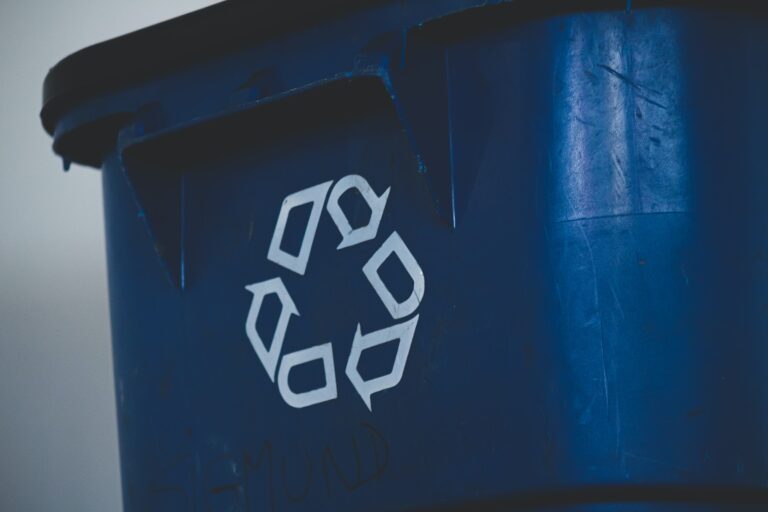The circular economy represents a move away from a traditional, ‘take-make-use-dispose’, linear system to one that designs out waste and pollution, keeping products and materials in use, and regenerating natural systems. Supporters of a circular economy suggest that in addition to being a tool for tackling climate change, it can promote social and economic prosperity and resilience.
Moving from a linear to a circular economy would require a change in human consumption behaviour (United Nations’ Sustainable Development Goal 12), and taxation policy may be an integral part of effecting the shift. We considered the research question – how can the Australian tax system be reformed to better support a circular economy?
The research was by way of interviews with circular economy stakeholders and taxation experts. Taxation policy recommendations were developed to inform the adoption of circular economy initiatives in Australia.
Taxation and the circular economy
China, Japan, and countries in Europe have made rapid progress in their shift towards a circular economy. In Australia, different levels of government have recently proposed initiatives and produced reports aimed at moving towards this model. The majority of these are focused heavily on waste management, with less regard for adjusting consumer behaviour.
In New Zealand, the 2019 Final Report of the Tax Working Group embraced the concept of a circular economy, and the report suggested taxation can be used to ‘change behaviours and fund transitions towards a more regenerative, circular economy’. China has promoted a circular economy through tax incentives including value-added tax (VAT) exemptions and refunds. A central premise of the circular economy is that products should be designed to be either recycled, reused, disassembled or remanufactured, and some European countries impose taxes and charges on producers as a means of extending their responsibility to the end of a product’s life. Examples include taxes and charges on electrical equipment, motor vehicles, batteries, packaging, used tyres, and plastic bags.
The taxation system can be used to provide economic incentives to encourage innovation and investment and to inform and influence consumer choices. According to Di Maio et al, governments have a role in influencing the recourse efficiency of consumers. Industrialised countries tend to have relatively high taxes on labour whereas low taxes apply on the use of natural resources and activities that produce waste. Higher taxes on non-repairable single use products is a way that the circular economy can be supported. One of the main premises of a circular economy is that product design should be focussed upon ‘ease of recycling, reuse, disassembly and remanufacturing’.
In the Australian context, the Henry Review recommended ‘replacing current arrangements with a resource rent tax’, noting that it would be a ‘more effective way to ensure an appropriate return to Australians for the exploitation of their natural resources’.
We conducted semi-structured, in-depth interviews with two groups: circular economy stakeholders, and taxation experts, with eight interviewees in each group. The interviews with the first group were to gain a deeper understanding of the current Australian circular economy context, and the interviews with the second group were to gain an in-depth understanding of how the tax system could be used to support a circular economy. The interview data were imported into NVivo for coding and analysis.
Interviews with circular economy stakeholders
All interviewees from this group were of the view that consumer and organisation behaviour could be encouraged towards a circular economy by way of the taxation system. They were also generally supportive of a tax system that encouraged waste reduction, improved product design, and improvement to procurement policies and choices.
Some interviewees were of the view that the rate of goods and services tax (GST) could be increased from 10% as a way of redirecting consumer choice from new to recycled products. Research and development (R&D) incentives were suggested as a means for designing product longevity. It was also noted that access to such incentives could be problematic due to the complexity of R&D aspects of the tax system.
Interviews with taxation experts
The themes explored in these interviews included: changing the tax mix, GST, R&D, and tax holidays.
There was a view that changing the tax mix could encourage waste reduction, recycling and repurposing materials. Some also supported reducing taxes on labour and increasing taxes on non-renewable resources and externalities.
On GST, there were different perspectives from the interviewees. In some other jurisdictions, differential VAT rates are perceived as a significant support measure for the circular economy. The Australian interviewees, however, were not as supportive of differential rates in the GST system. Nevertheless, it was argued that the existing GST-free category could be expanded to support a circular economy. One interviewee described the GST as a ‘difficult candidate’ for supporting a circular economy. This was based on the view that the GST system should have as few carve outs as possible to avoid complexity. However, the GST-free category already exists, and therefore it is unclear how utilising it to promote a circular economy would, by itself, increase complexity.
The use of R&D incentives to promote a circular economy was generally supported by the interviewees. One respondent argued that R&D incentives could be used to ‘overhaul certain industries and make them more aligned with the circular economy’. Most of the interviewees referred to the problems with tax holidays exceeding any benefits. For example, their role in engendering tax avoidance was an argument against their use.
Another point of interest was the view that the traditional ‘good’ tax system criteria of vertical equity, horizontal equity, simplicity, and efficiency were not necessarily applicable to evaluating tax policy changes that are for the benefit of the circular economy. It was also noted that a broader view of efficiency—rather than efficiency as it applies to tax system design–is one that includes making the economy more efficient by eliminating global waste. One interviewee argued that the tax system definition of efficiency was relevant to revenue taxes and not to taxes that are focussed upon behaviour modification.
A new entity designation can be a start
A consideration for policy makers is the eligibility criteria for accessing incentives and concessions that may be introduced to promote a circular economy. We recommend that a tax law definition of ‘circular economy entity’ is developed as a starting point here. A circular economy entity designation in Australian tax law may operate as a strong signal for government support of the further development of a circular economy in Australia and provide a foundation for future tax system reform.
This approach would be consistent with that used in Australian tax law – the Income Tax Assessment Act 1997 (ITAA97) contains definitions such as ‘base rate entity’, ‘corporate tax entity’, and ‘asset entity’. In defining circular economy entity, consideration should be given to whether the taxpayer is in an industry that is clearly part of the circular economy. This would include businesses involved in waste reduction, recovery, and recycling. Australia could also look to the approach in other jurisdictions to using their tax systems to promote a circular economy.
This article is based on 2021 Fiedler TA, Minas JW, O’Keefe PA, ‘Supporting the circular economy in Australia through taxation reform’, Australian Tax Forum, 36 Article 321-345. ISSN 0812-695X






Recent Comments